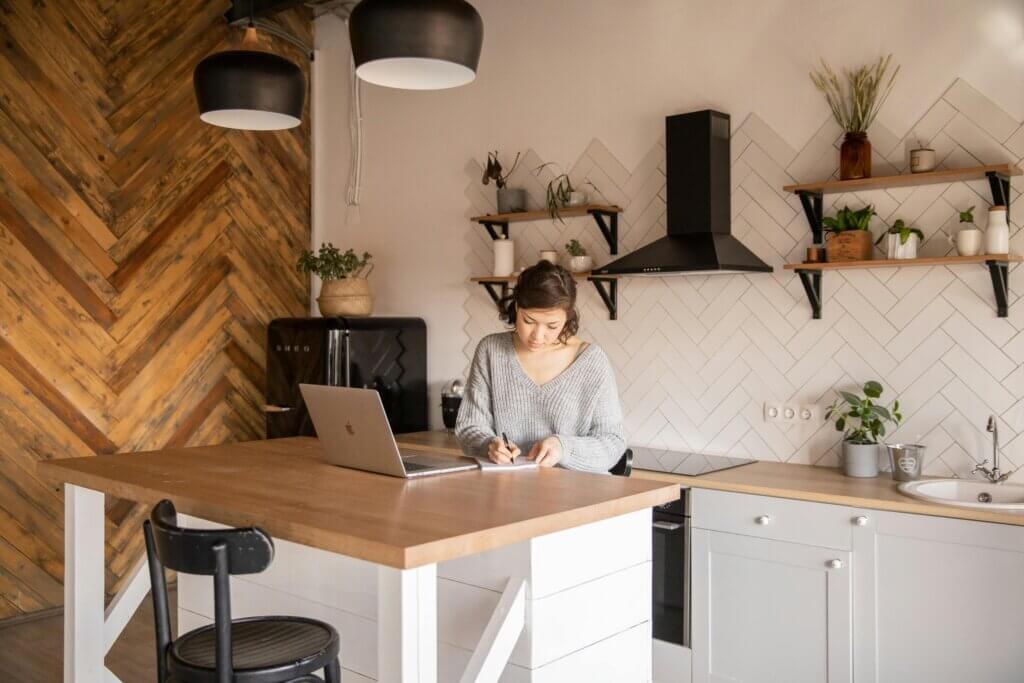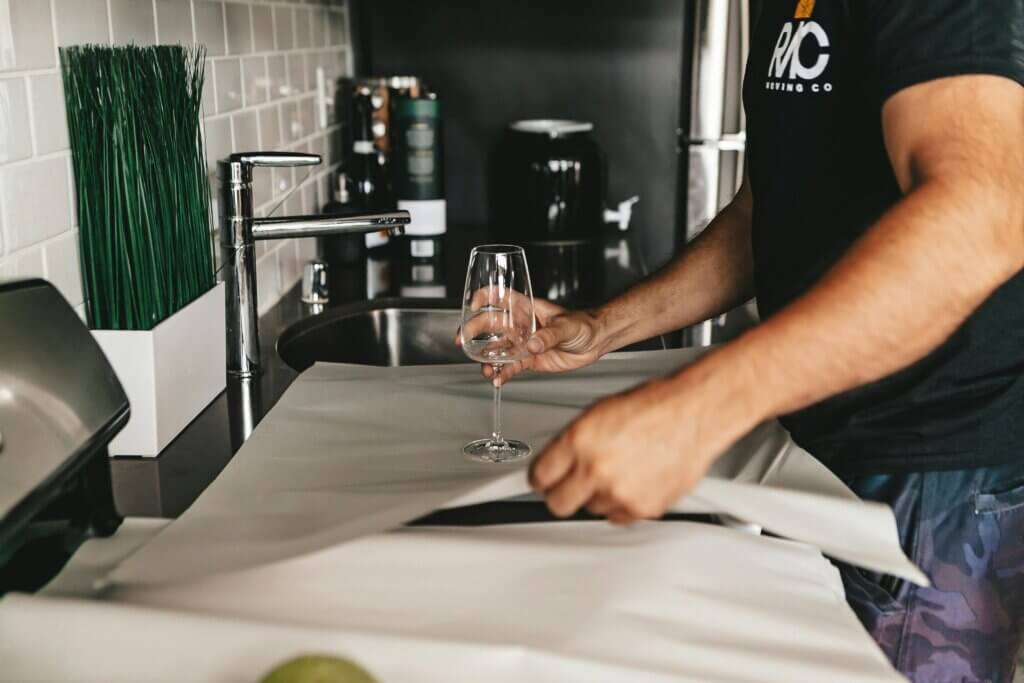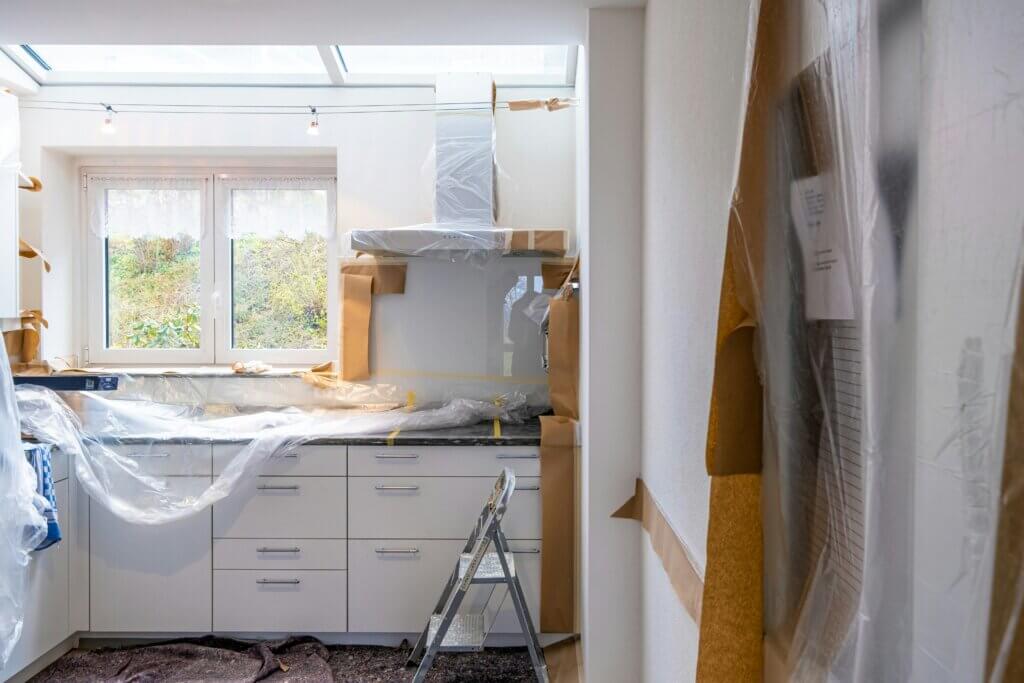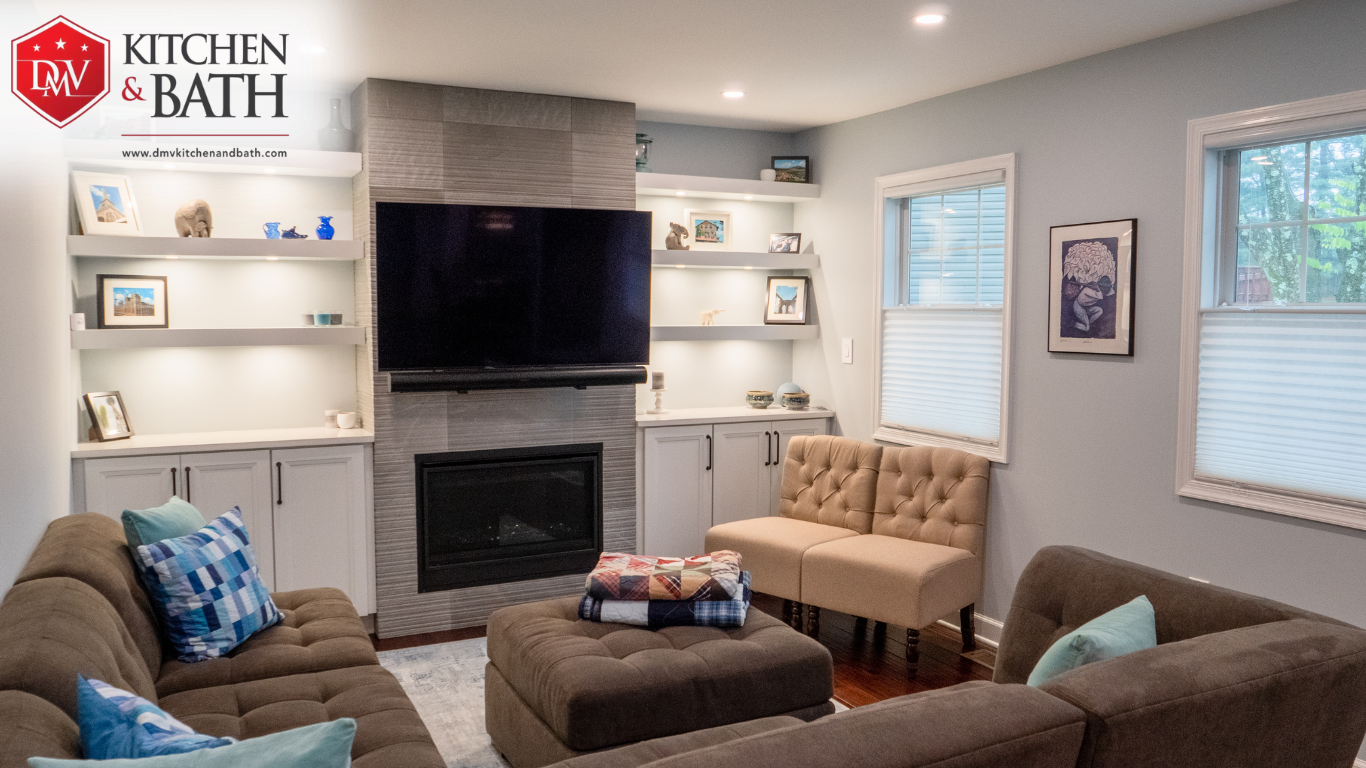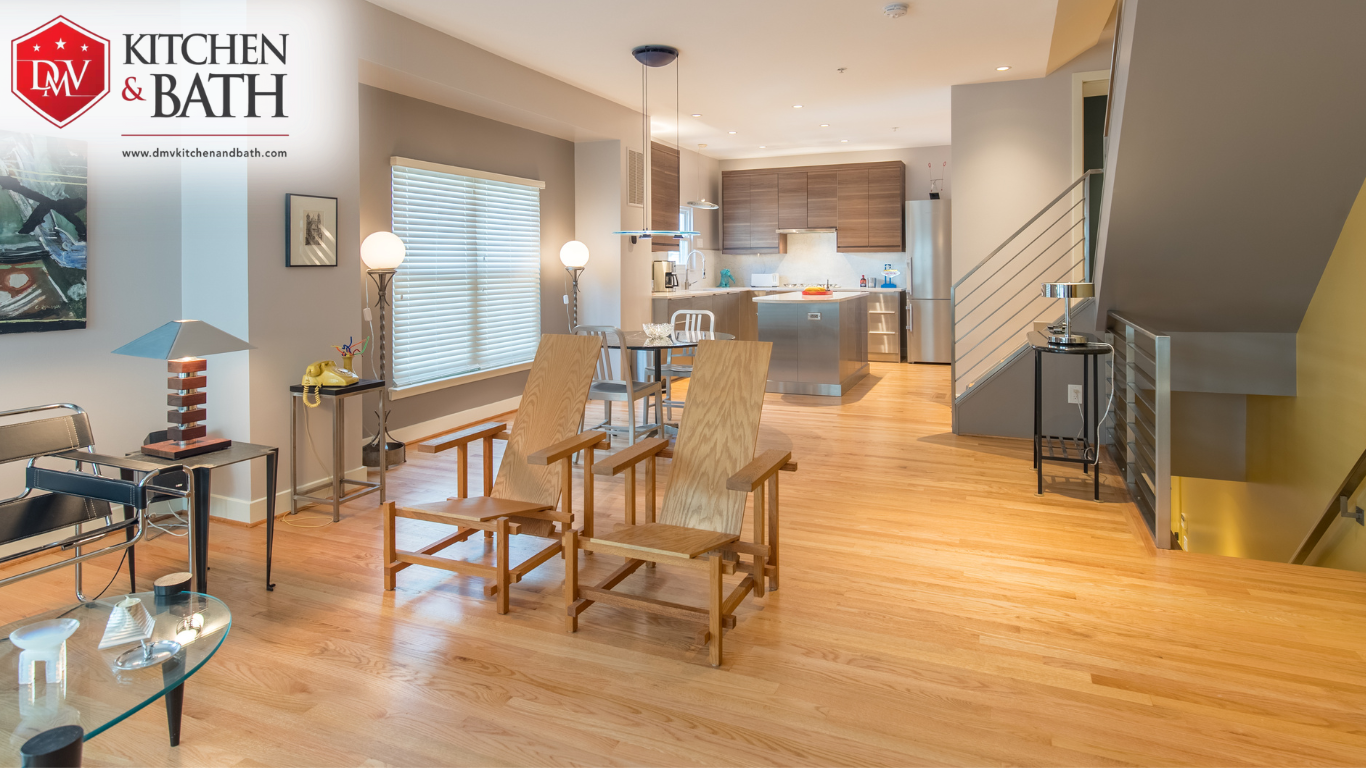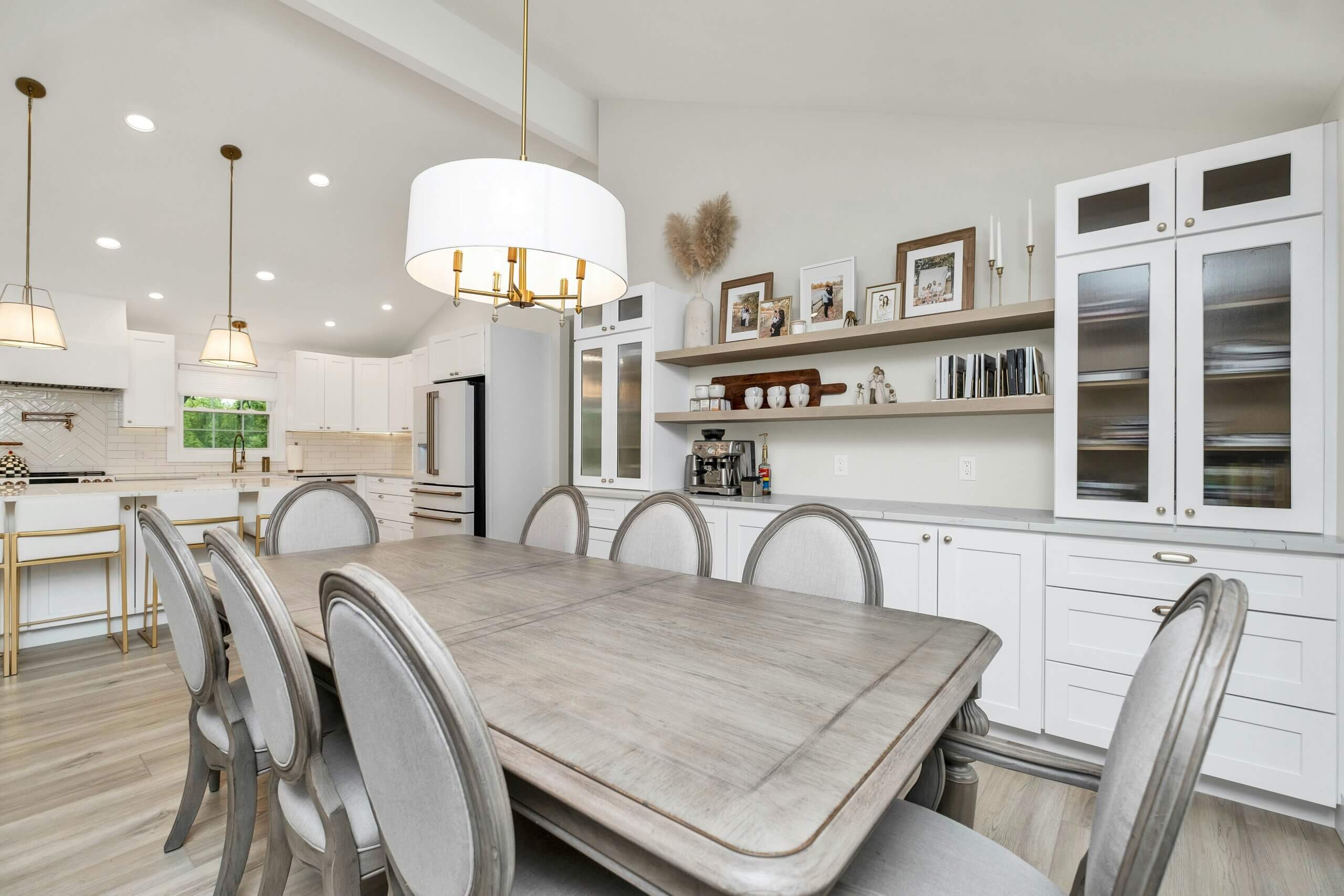
Getting Ready for Your Kitchen Remodel: Essential Preparations and Planning Tips13 min read
So, you’ve decided it’s time to give your kitchen a well-deserved makeover – exciting stuff! But hold on just a sec before you start swinging that sledgehammer. Getting ready for a kitchen remodel involves a bit more than binge-watching HGTV and dreaming about granite countertops. After all, embarking on a kitchen remodel is like setting off on a grand adventure. There’s excitement, a hint of nerves, and of course, the promise of a beautiful destination at the end.
We’re not just talking about picking out paint colors or choosing countertops – although those are definitely part of the fun. Think of it as laying the groundwork for your culinary masterpiece. From setting a realistic budget to ensuring you have a backup plan for those inevitable surprises, we’re here to guide you through it all.
Contents
How To Prepare For A Kitchen Remodel
If you’re ready to embark on the journey of transforming your kitchen into the heart of your home, you’re in the right place. Kitchen remodeling is an exciting endeavor that promises to breathe new life into one of the most important spaces in your house. In this comprehensive guide, we’ll walk you through everything you need to know to prepare for your kitchen remodel. From setting a realistic budget and defining your renovation goals to selecting the perfect materials and coordinating with contractors, we’ve got you covered.
Define Your Goals
Defining your goals is a crucial first step in preparing for a kitchen remodel. Your goals will serve as the foundation for all decisions you make throughout the kitchen remodeling process.
Identify Pain Points
Take a close look at your current kitchen and pinpoint what isn’t working for you. Are you lacking counter space? Do you need more storage? Is the layout inefficient for your cooking needs? Identifying these pain points will help you prioritize improvements during the remodel.
Consider Your Lifestyle
Think about how you use your kitchen on a daily basis. Are you an avid cook who needs ample workspace and high-quality appliances? Do you frequently entertain guests and need a kitchen that accommodates social gatherings? Understanding your lifestyle will help you tailor the remodel to suit your specific needs and preferences.
Set Priorities
Once you’ve identified your pain points and considered your lifestyle, it’s time to prioritize your goals. Make a list of must-have features and improvements, as well as nice-to-have options. This will help you allocate your budget and resources more effectively, focusing on the aspects of the remodel that are most important to you.
Think Long-Term
Consider the future when setting your goals for the remodel. Are you planning to stay in your home for many years to come, or are you preparing to sell soon? Your long-term plans can influence decisions about the design, materials, and features you choose for your new kitchen.
Set a Realistic Budget
Establishing a budget is crucial to prevent overspending and ensure that your renovation stays on track. Allocate funds accordingly to different aspects of the remodel, prioritizing areas of greatest importance.
Assess Your Finances
Start by taking a close look at your finances to determine how much you can realistically afford to spend on the remodel. Consider your savings, available credit, and any other sources of funding.
Research Costs
Research the average costs of kitchen remodeling services in your area, taking into account factors such as labor, materials, and permits. Look for online resources, consult with professionals, and gather quotes from contractors to get a clear understanding of the expenses involved in their kitchen remodeling services.
Prioritize Spending
Determine which aspects of the remodel are most important to you and prioritize your spending accordingly. Make a list of must-have features and upgrades, as well as areas where you’re willing to compromise or cut costs if necessary.
Factor in Contingencies
Homeowners need to budget for unexpected expenses and contingencies that may arise during the remodel. Plan to set aside a buffer of around 10-20% of your total budget to cover unforeseen costs, such as structural issues or design changes.
Consider Financing Options
If your budget is limited, explore financing options such as home equity loans, personal loans, or credit cards with promotional interest rates. Just be sure to carefully consider the terms and repayment requirements before committing to any financing arrangement.
Be Realistic
While it’s tempting to aim for the kitchen and bath of your dreams, be realistic about what you can afford within your budget constraints. Focus on making smart investments that will improve the functionality, aesthetics, and value of your home without breaking the bank.
Plan for Phased Renovations
If your budget is tight, consider breaking the remodel into smaller, phased projects that can be completed over time. This allows you to spread out the costs and tackle one aspect of the kitchen at a time, starting with the most critical upgrades.
Review and Adjust
Once you’ve set your initial budget, review it carefully to ensure it aligns with your goals and priorities. Be prepared to adjust your budget as needed based on new information, changes in scope, or unexpected expenses that may arise during the remodel.
Consult with Professionals
Engage with experienced professionals, such as architects, interior designers, and contractors, to assess the feasibility of your ideas and gather expert advice. They can offer valuable insights into optimizing space, selecting durable materials, and adhering to building codes.
Expert Advice
Professionals such as architects, interior designers, and kitchen remodeling contractors bring valuable expertise and services to the table. They can help you assess your space, identify potential challenges, and offer creative solutions to achieve your goals.
Feasibility Assessment
Before diving into the remodel, it’s essential to understand the structural limitations of your space and any potential obstacles that may arise. Consulting with professionals allows you to assess the feasibility of your ideas and make informed decisions about the scope of the project and the kitchen remodeling services required.
Budget Planning
Professionals can provide valuable insights into the costs involved in your remodel and help you set a realistic budget. They can recommend cost-effective alternatives, advise on where to splurge and where to save, and give tips to help you prioritize your spending to get the most bang for your buck.
Design Assistance
Whether you have a clear vision for your new kitchen or need help brainstorming ideas, professionals can assist you in creating a cohesive kitchen design plan. They can help you select materials, finishes, and fixtures that align with your aesthetic preferences and functional requirements.
Contractor Selection
Choosing the right kitchen remodeling contractor is critical to the success of your remodel. A reputable contractor with experience in kitchen renovations can ensure that the project runs smoothly, stays on schedule, and meets quality standards. Professionals can help you vet potential contractors, obtain bids, and negotiate contracts.
Code Compliance
Before commencing any construction work, obtain the required permits from your local authorities. Building codes and regulations vary by location and can impact the design and execution of your remodel. Consulting with professionals ensures that your project complies with local building codes, permits are obtained, and inspections are scheduled as needed. Failure to obtain permits can result in costly fines and delays.
Project Management
Managing a kitchen remodel involves coordinating multiple contractors, scheduling deliveries, and overseeing construction activities. Professionals can take on the job in the role of project manager, ensuring that everything runs smoothly and addressing any issues that arise along the way.
Prepare for Temporary Disruptions
Anticipate temporary disruptions to your daily routine during the kitchen remodeling phase. By taking proactive steps to prepare for temporary disruptions, you can minimize stress and inconvenience during your kitchen remodel.
Set Up a Temporary Kitchen
Designate a temporary kitchen space in another area of your home, such as a spare room, garage, or basement. Equip this space with essential appliances like a microwave, toaster oven, coffee maker, and mini-fridge. Use disposable plates, utensils, and cups to minimize cleanup.
Stock Up on Non-Perishable Foods
Before the remodel begins, stock up on non-perishable foods that require minimal preparation, such as canned goods, pasta, rice, and snacks. Consider meal planning and batch cooking ahead of time to simplify mealtime during the renovation.
Plan for Outdoor Cooking
If weather permits, consider setting up an outdoor cooking area with a grill or portable stove. This allows you to cook meals al fresco and reduces the need for indoor kitchen access during the remodel.
Coordinate with Contractors
Communicate with your contractor to establish a clear timeline for the renovation and minimize disruptions to your daily routine. Discuss expectations regarding work hours, noise levels, and access to the kitchen area. Be flexible and prepared to adjust your schedule as needed.
Protect Belongings
Cover furniture, electronics, and other belongings in adjacent rooms to protect them from dust and debris generated during the repair or remodel. Use plastic sheeting or drop cloths to create barriers and seal off doorways to contain messes.
Communicate with Family Members or Housemates
Keep family members or housemates informed about the renovation timeline and any adjustments to daily routines. Encourage open communication and flexibility to ensure everyone is prepared for temporary disruptions and inconveniences.
Stay Organized
Label boxes and containers for easy access to essential items during the remodel. Keep important documents, contact information for contractors, and warranties in a designated folder or binder for quick reference.
Provide Parking
Providing parking for contractors and workers during a kitchen remodel is essential for ensuring smooth logistics and minimizing disruptions. Identify suitable parking areas near your home that can accommodate the vehicles involved in the kitchen and bath remodel. Most of the time it just involves one van, but consider the size of vehicles and any special requirements, such as space for trucks or trailers.
Clear Out the Space
Clearing out the space before the remodel begins helps create a clean, organized environment for contractors to work in and minimize the risk of damage to your belongings.
Declutter
Begin by decluttering your kitchen and removing items that you don’t need or use regularly. Sort through cabinets, drawers, and pantry shelves, and set aside items for donation, recycling, or disposal.
Pack Away Non-Essentials
Pack away dishes, cookware, small appliances, and other non-essential items that won’t be needed during the remodel. Use sturdy boxes or plastic bins to store items, and label them clearly for easy identification.
Protect Fragile Items
Wrap fragile items such as glassware, ceramics, and decorative pieces in bubble wrap or packing paper to prevent breakage during the remodel. Consider storing these items in a separate, secure location away from the construction area.
Remove Furniture and Appliances
Clear out any furniture, appliances, or large items that will be in the way during the remodel. This includes tables, chairs, bar stools, and kitchen islands. Store these items in another room or a storage area until the remodel is complete.
Disconnect Utilities
If your remodel involves major plumbing or electrical work, disconnect utilities such as water, gas, and electricity from the kitchen area. Follow safety precautions and turn off the appropriate valves or switches before disconnecting.
Create a Work Zone
Designate a specific area in your home where contractors can set up their tools and equipment during the remodel. This helps keep the rest of your home tidy and minimizes disruptions to other areas of the house. Also, make sure to designate a trash space for the workers to ensure a clean working area.
Disable Alarms
Disabling alarms is an important consideration when preparing for a kitchen remodel to prevent unnecessary disruptions and ensure the safety of workers. Request a temporary suspension of your alarm system during the remodel to prevent false alarms triggered by construction activities. The alarm company may offer options to suspend monitoring or adjust sensitivity settings to minimize false alerts.
Stay Flexible and Communication
Flexibility is key when navigating unexpected challenges or revisions during the remodeling process. Maintain open communication with your design team and contractors to address any concerns promptly and make necessary adjustments.
Expect the Unexpected
Understand that unexpected challenges may arise during the remodel, such as unforeseen structural issues, material delays, or design changes. Stay flexible and mentally prepared to adapt to these challenges as they arise.
Regular Check-Ins
Maintain regular communication with your contractor and design team throughout the kitchen remodeling process. Schedule check-in meetings or calls to discuss progress, address any concerns or questions, and ensure that everyone is on the same page.
Clarify Expectations
Clearly communicate your expectations for the remodel up front, including design preferences, budget constraints, and project timelines. Make sure all parties involved understand their roles and responsibilities to avoid misunderstandings later on.
Document Changes
Keep detailed records of any changes or modifications to the original scope of work, including design revisions, material substitutions, or budget adjustments. This helps prevent misunderstandings and ensures that everyone is aware of any changes to the project.
To Sum It Up
Getting ready for a kitchen remodel is all about preparation, collaboration, and a healthy dose of flexibility. Once you’ve got your wish list down, it’s time to crunch some numbers and set a budget. Don’t forget to consult with the pros – they’ve got the expertise to help you navigate the process. And hey, don’t forget to prepare for some temporary disruptions along the way – setting up a makeshift kitchen and clearing out the space will make life a whole lot easier while the work is underway. With the right approach, you’ll be well on your way to cooking up a storm in your brand-new kitchen in no time!
Ready to transform your kitchen into the space of your dreams?
Start preparing for your remodel today! Whether you’re upgrading appliances, expanding your workspace, or revamping the entire layout, careful planning is key. Don’t wait any longer – take the first step towards your dream kitchen now! Contact us to get a free estimate and turn your and create a sanctuary of functionality!





